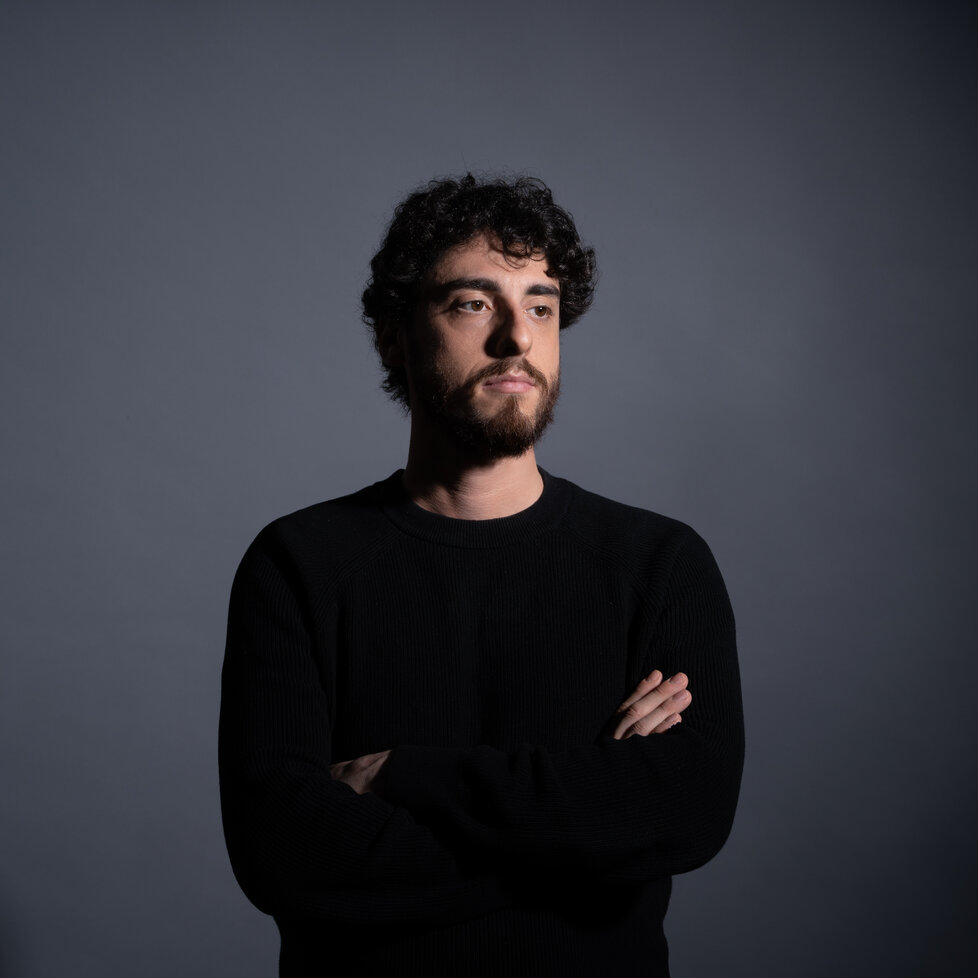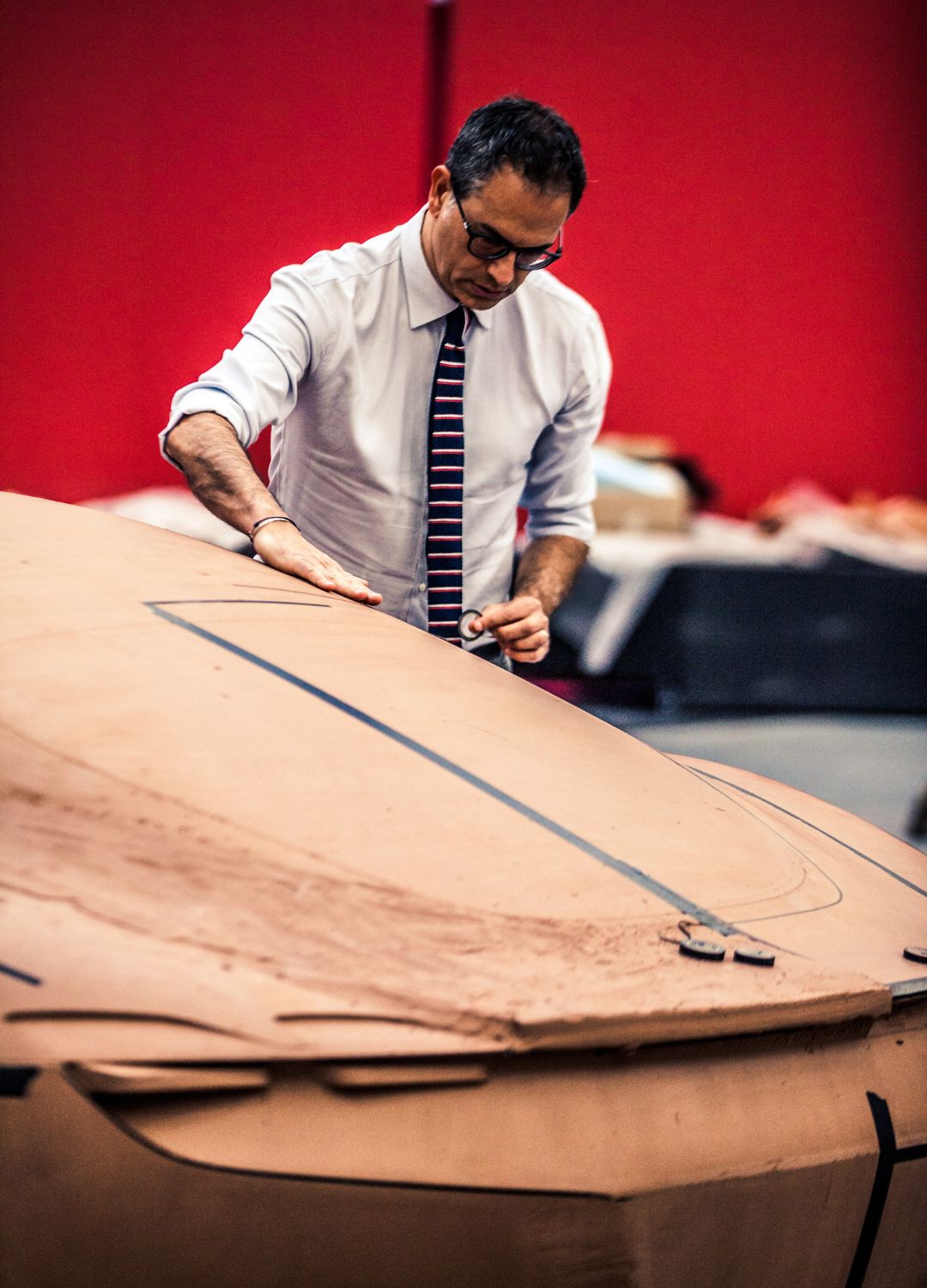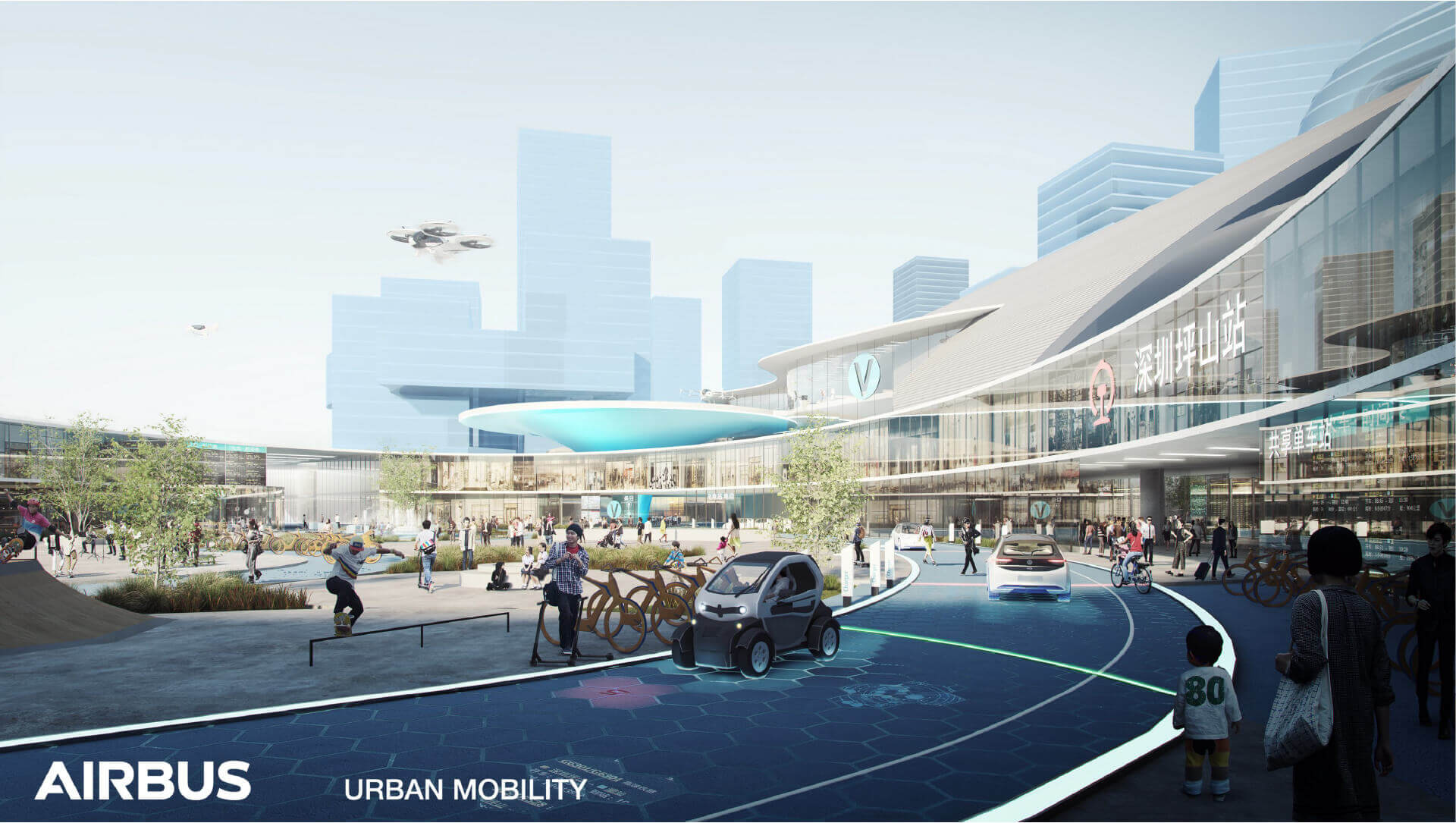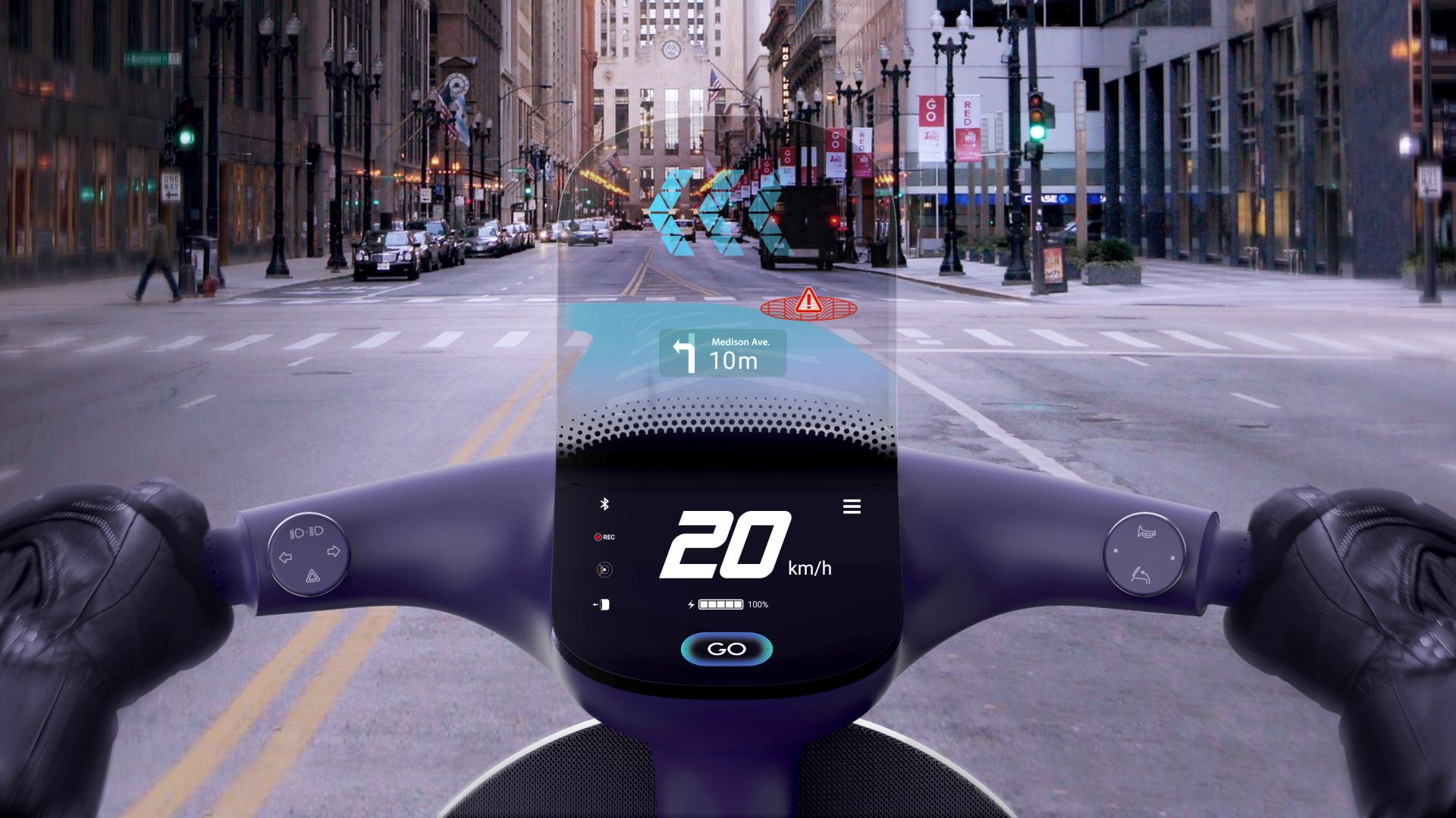Meet Flavio Manzoni, the genius mind behind Ferrari’s car designs since 2010
Supercars blend performance, aesthetics, and emotions seamlessly. However, what goes into crafting a dream like a Ferrari? We asked the man who, more than anyone else, embodies the essence of Ferrari design.

Before delving into the interview with Flavio Manzoni, let’s set the stage.
During a casual gathering with friends on a countryside balcony in central Italy, conversation took an unexpected turn toward the topic of genius. One of my friends, an engineer, remarked, “Take the man who designs Ferrari cars; I couldn’t even imagine where to start. Those cars are so beautiful, and I don’t even know why. What makes a car beautiful?“
This compelled me to reevaluate something I had always taken for granted: the inherent beauty of a Ferrari. With each new Ferrari release, the expectation is already set—stunning beauty is a given, almost a law of life. I recently found myself breathless in the presence of a Ferrari “Roma,” and it was apparent why; after all, it’s a Ferrari. Yet, sometimes I forget that these cars are made by people. So, where does the magic lie? Is it in the performance? The sleek lines? The overall experience?
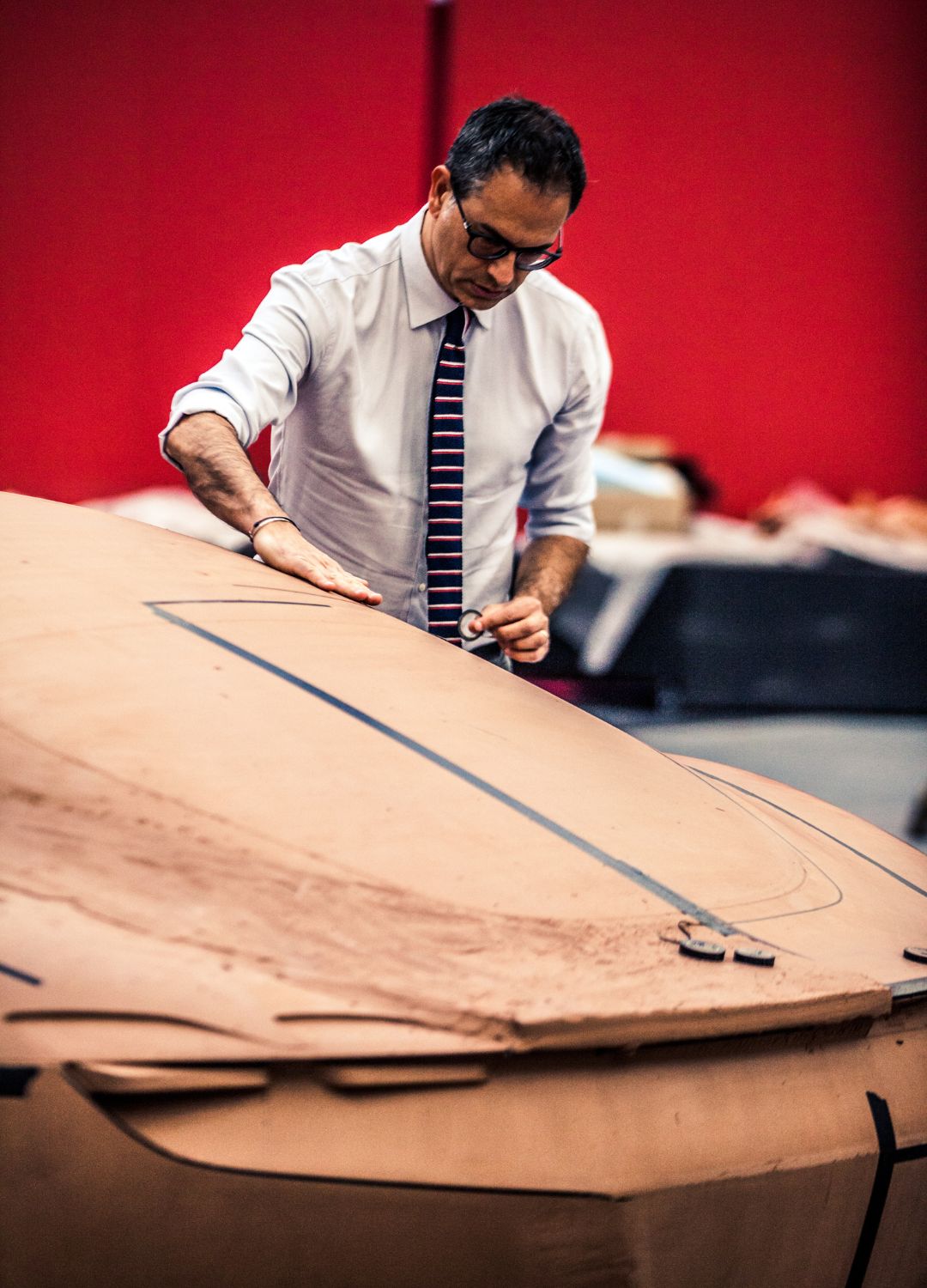
While seemingly obvious, it’s the combination of these factors, among others, that forms a magical blend, making everything appear perfect. Much like a delectable dish, enchanting music, or remarkable architecture, a beautiful car embodies a harmonious fusion of various elements.
Upon reaching out to Flavio Manzoni, I sensed that I was conversing with a personality akin to those found in history books—a person with a clear understanding of what he is doing and where it’s all headed. A man who has grasped the essence of steering design instinctively.
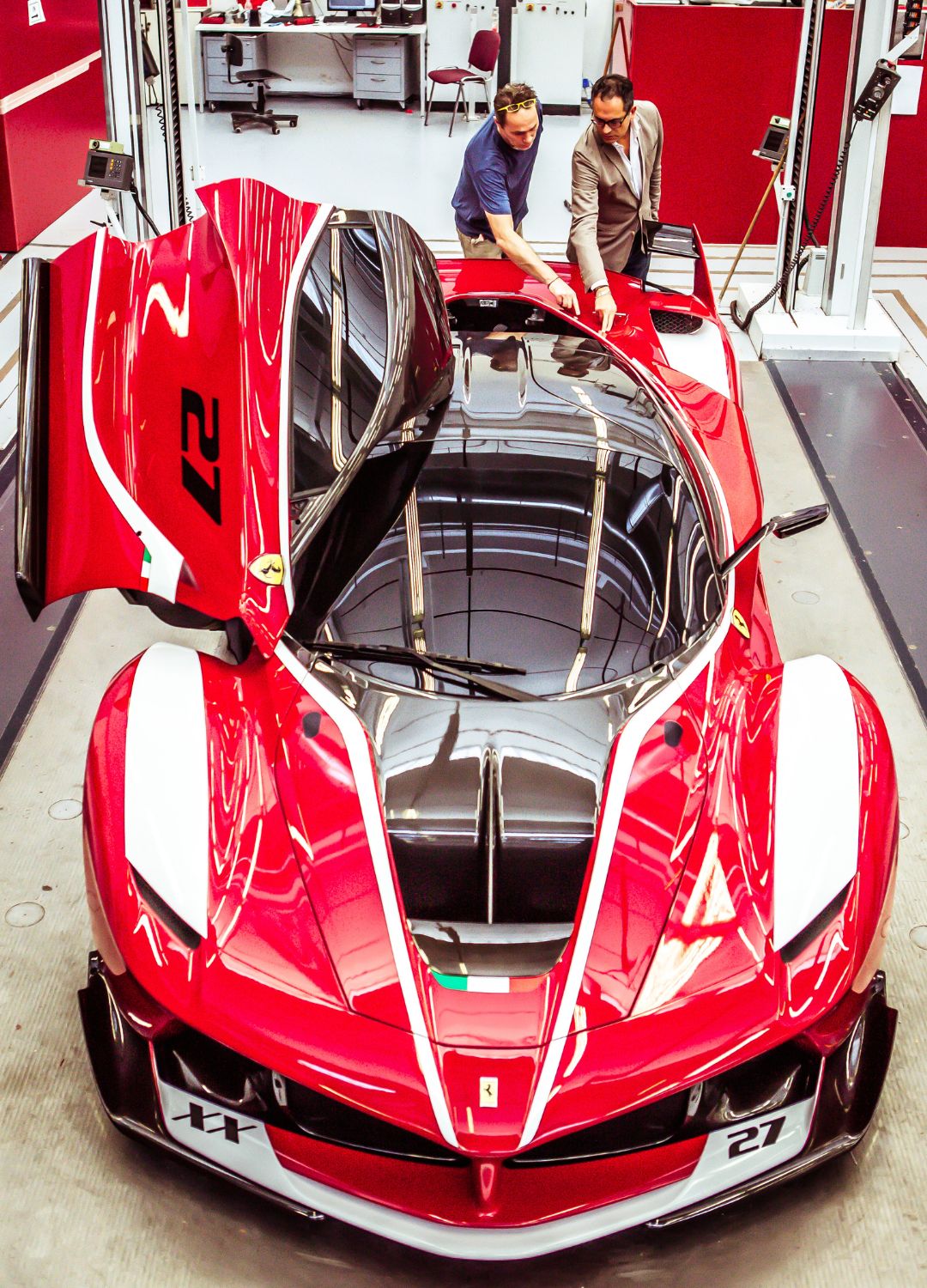
Which elements shape the creative idea behind a new car? How does the initial idea, even in its early stages, encompass the complexity inherent to this type of design?
Flavio Manzoni:
“In the past, car designers could think of themselves as artists as they had almost total creative freedom. Nowadays, along with homologation requirements, there is a very high level of technological complexity in cars, particularly Ferrari cars. The designer’s job has become much more difficult and complicated, also because we are constantly striving for excellence, to improve right across the board, from aerodynamics to thermal management and track performance.
The starting point for any new model is the engineering and technical ‘package’. This means that, today, designers must also have a good working knowledge of the technical aspects that underpin every design.

There is, however, still ample scope to give every single car a specific and very creative stamp, to give it a unique personality all of its own. A designer’s job is never just styling; at the basis of each new project is the study of proportions, balance and harmony of volumes and shapes. We can find inspiration in architecture and in artistic works, especially sculptures because I believe that when we design a car, we are creating something using an organic approach to forms, to surface modeling, that has its own sculptural importance.
So the design of a car starts from fully understanding the engineering approach, and then translating it into a form that captures the essence of the project. The 2019 SF90 Stradale is a good example because, in terms of proportions, the configuration with the central-rear mounted V8 and the hybrid components allowed us to design a “cab forward” effect and a long and architectural tail.”
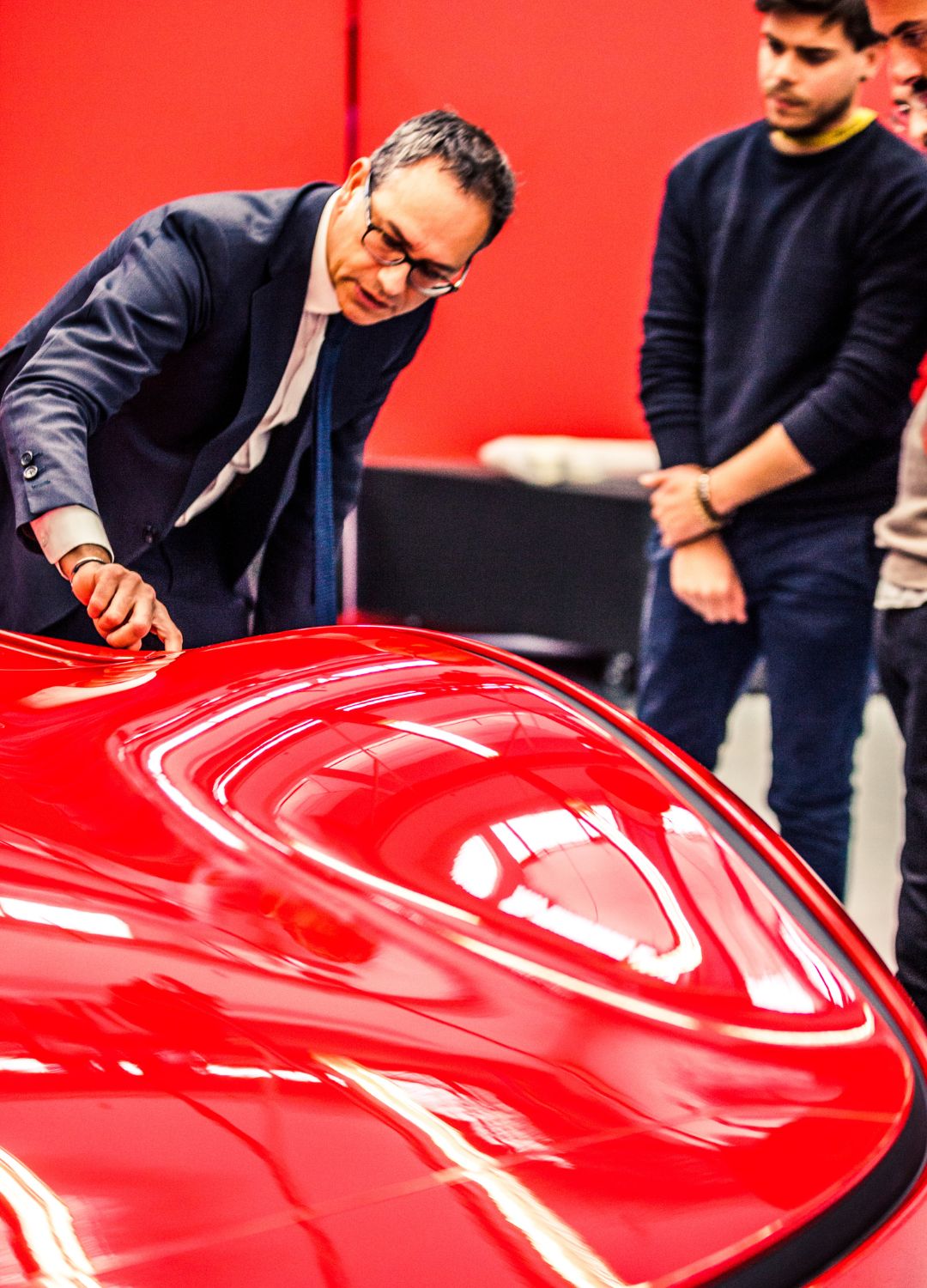
As Ferrari’s Chief Design Officer, you manage a large team of world-class professionals. How do you share your ideas and convey your vision to them?
Flavio Manzoni:
“In the Centro Stile we have a very eclectic and talented team of designers from various cultural backgrounds. And not only designers, but also engineers, modelers and architects! In common, they all have curiosity, energy, passion and adaptableness, and their different backgrounds and experience help bring ideas to life, identifying solutions that can give them shape.
In our approach to design, it is vital to feed one’s curiosity, opening yourself up to broader and broader horizons. Inspiration, the seeds of new and original ideas, can come from anywhere. So we encourage everyone to look around them to see how a solution, an innovation that came about and is being developed in one sector, can also be applied in other areas, even in a random way.
The first thing a person joining the team must understand is Ferrari’s rich design heritage, and that we must remain true to our founder’s uncompromising approach to engineering, technological innovation and exclusivity, building cars that the world dreams about. The role of our heritage is to inform future design direction, but without shackling it.
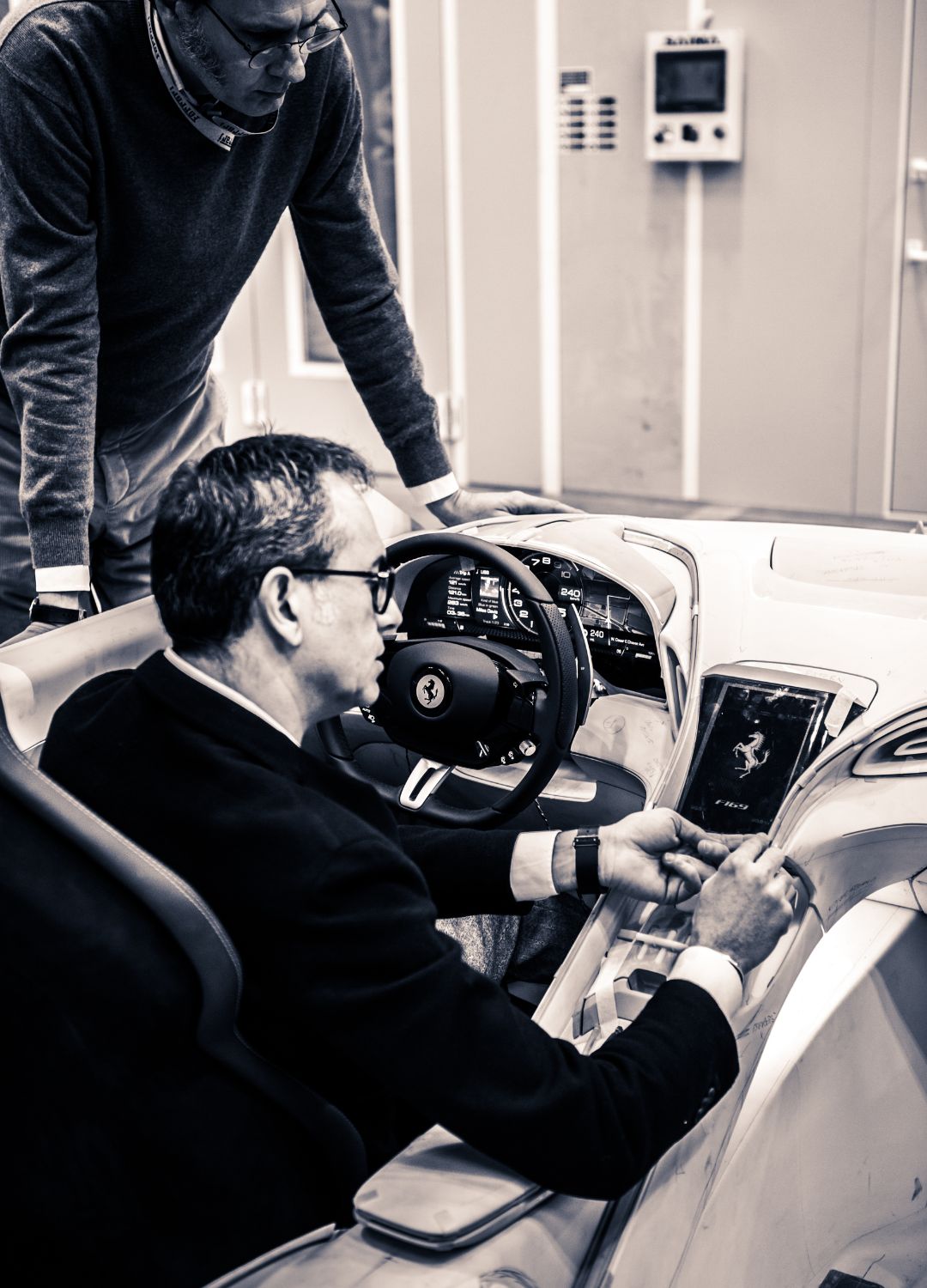
Throughout history, technological progress has repeatedly inspired design, and today is no different. The automotive sector is dealing with quite a disruptive technological transition. Obviously, I’m talking about the advent of electric cars. So our people must always have in mind our stylistic language, but be open to redefining it, welcoming also the possibility of designing absolutely innovative and modern, I would even say unexpected, shapes while remaining faithful to the principles of coherence between form and function that a Ferrari must express, and always adopting that artistic and sculptural approach that ensures is each of our new cars is immediately perceived as a Ferrari.”
It takes several years to bring a new car model to life. From the initial concept to the launch, what factors determine the success of specific design or engineering choices over others?
Flavio Manzoni:
“I would say at the basis of the success of any car is the constant pursuit of excellence at every phase of a project – from defining the concept, to the choice of architecture and engineering solutions, right up to the final industrialisation.
For Ferrari, the creation of the Styling Centre was central to the desire to achieve excellence. Managing the design process in-house, in close relationship with all Ferrari’s Technical Departments, including aerodynamicists and engineers who deal with materials and technologies, is certainly one of the key elements for the evolution and success of Ferrari’s range of models.
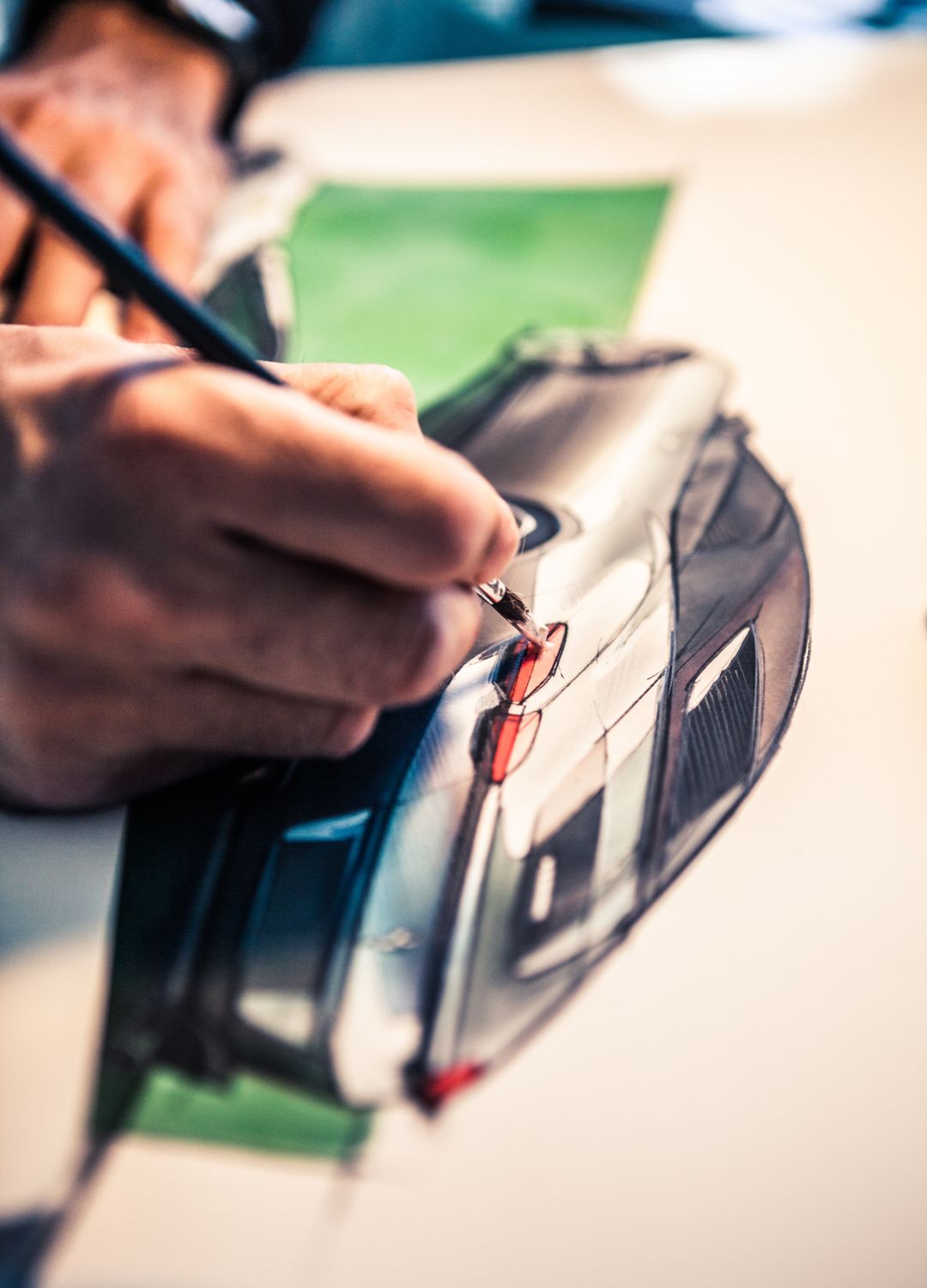
It’s an everyday dialogue, a true synergy which offers continuous interaction and information exchange, benefitting the entire innovation process. Often, during this continuous dialogue with technicians and engineers, new solutions are found that reconcile functional and aesthetic requirements, pushing the envelope of performance and design.”
When it comes to Ferrari cars, they are gauged on both performance and the feelings they elicit. What are the emotions you aim to convey to owners when they see their car for the first time?
Flavio Manzoni:
“From a purely design perspective, we always seek to create a car that is beautiful and that is immediately recognisable as a Ferrari. It may sound banal, but we want clients’ faces to light up when they see a Ferrari for the first time. It should generate a feeling of surprise and delight at the same time. And that’s really not easy to generate!”

Considering the ongoing changes in the automotive world, from electric cars to autonomous driving, what impact do you think they will have on Ferrari’s future vision?
Flavio Manzoni:
“When disruptive technological innovation presents itself – an important technological transition, like the one the automotive sector is facing – the conditions are created for a peak of innovation also from a formal and typological point of view.
And this is the opportunity that must be seized: the possibility of creating objects that are extremely different from previous ones, faithful, as usual, to the principles of coherence between form and function that a Ferrari must express, always adopting that artistic and sculptural approach that makes each of our new cars immediately recognisable as a Ferrari.
Trying to imagine the next few decades, I find it exciting that we can embrace new technologies, which are already very promising from the point of view of research in the field of design.”

Are there cultural models or masters associated with the world of art, architecture, or design objects that inspire your creative approach to the automotive world?
Flavio Manzoni:
“There is a quote by Constantin Brâncuşi that really resonates with me and that manifests in the philosophy behind the Ferrari Styling Centre: “Simplicity is resolved complexity.” One of the most influential sculptors of the 20th Century, Brâncuşi – along with other great masters of contemporary art – have taught us as car designers to cultivate a certain sensitivity, at the same time safeguard a certain freedom, necessary to be able to make decisions and finalize the whole creative work with a spirit of synthesis. The ability to synthesize what then translates into the form that traces the surfaces and volumes of a car, but also every minute detail inside as well as outside, is basically what is required of an automobile designer.

Certainly I find inspiration in architecture and in artistic works, especially sculptures, and in the past I have cited the works of the Italian artist Lucio Fontana and sculptor Anish Kapoor, because I believe that when we design a car, we are creating something using an organic approach to forms, to surface modeling, that has its own sculptural importance. While these fields are very different, there are similarities in the creative process as ultimately it is about finding a solution that addresses very specific and tangible needs, while speaking to intangible aspirations and, why not? Dreams.”

